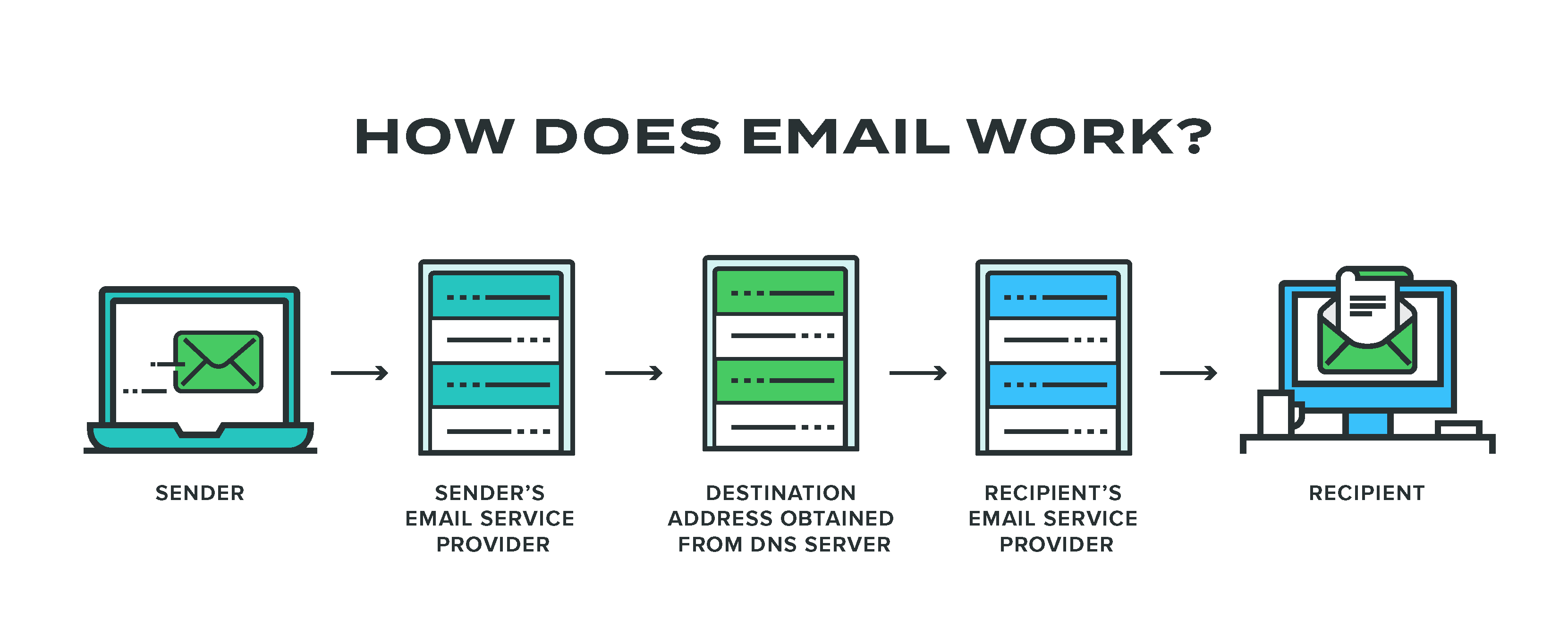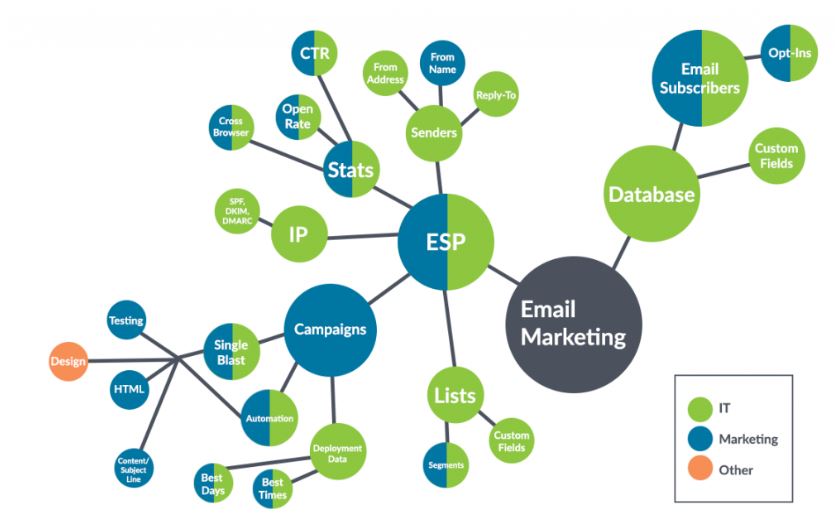The email ecosystem is extremely complex, which makes sense. Email is consistently the leading source of ROI for marketers. It couldn’t possibly be so simply as hitting “send” and waiting for the money to roll in.
Temple University mocked up a sample email ecosystem to show just how complex email marketing really is:
Image via Temple University
While this gives you a good sense of all the factors at play, what it doesn’t touch on are two key terms for the most successful email marketers: delivery and deliverability.
Though they sound similar, they are actually a bit different.
Delivery Explained
Delivery concerns the receipt of the email by a mailbox provider, meaning it wasn’t rejected by the recipient for any reason. It answers the simple question, did you email reach your recipient? Yes? Good, that’s delivery. But when you consider all the things affecting whether or not the email does make it there, that is deliverability. Do you have a good sender reputation? Do you hit lots of spam traps, hinting you may be nefarious in your list collection practices? These things (and many more) combine to create your deliverability.

This isn’t to say delivery is simple. As you can see, the process of email delivery is quite complicated… and when it comes to deliverability, the logistics become even more convoluted. Let’s start by breaking down the nuance of delivery.
Most email service providers (ESPs) provide reporting on how many emails were delivered, meaning they did not bounce and were not sender-rejected.
However, the “delivered” metric does NOT take into consideration how many emails are landing in the spam folder. It might appear you have strong inbox placement if you’re seeing 97% “delivered,” but the reality is that your emails might be landing primarily in the spam folder.
That is where deliverability comes into play.
Deliverability Explained
Deliverability metrics give email marketers a clearer picture of how their email programs are performing by monitoring key signs of positive activity, like how many of your emails are landing in your subscriber’s inboxes, rather than spam. Other factors affecting your deliverability are rates of engagement, like click-throughs (positive) and complaints (negative). A whole slew of data points work together to paint a picture of your email performance and your reputation as a sender, and that is your deliverability.
We recently put together this guide to deliverability to more thoroughly examine deliverability and email sender reputation, and how these two concepts relate to one another. It’s free; we think you’ll like it.
It’s important to note, delivery metrics are often the most common level of visibility into email performance email marketers get unless they are investing in enhanced email optimization platforms, like Validity for Email. Senders using these platforms get access to seed testing, pixel-based engagement tracking, spam trap monitoring, and other helpful tools. You can even consult with one of our deliverability experts when you’re struggling to reach the inbox.
Summed up as simply as possible, delivery is the tip of the iceberg. Deliverability is the part lurking below that can sink your email program faster than the Titanic. Without the ability to see what’s beneath the surface, you run a higher risk of finding your IPs and domains blacklisted, meaning your email won’t even be delivered. And we all remember what happened when the captain ignored reports to correct course and slow down – so take it from me: Get acquainted with your email sender reputation, educate yourself on deliverability, and chart a course for success.
